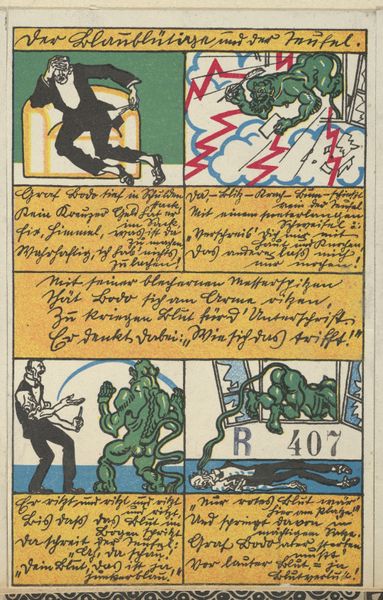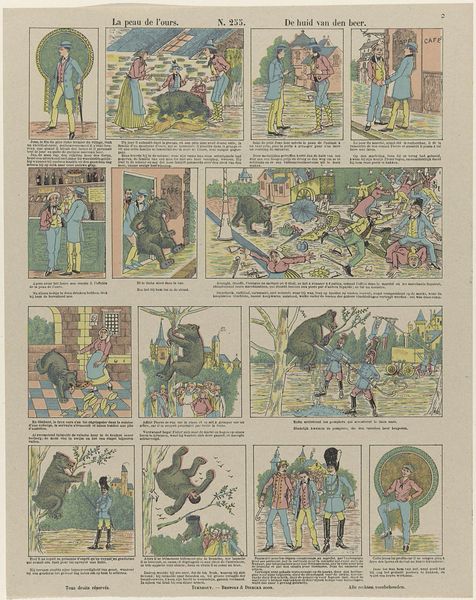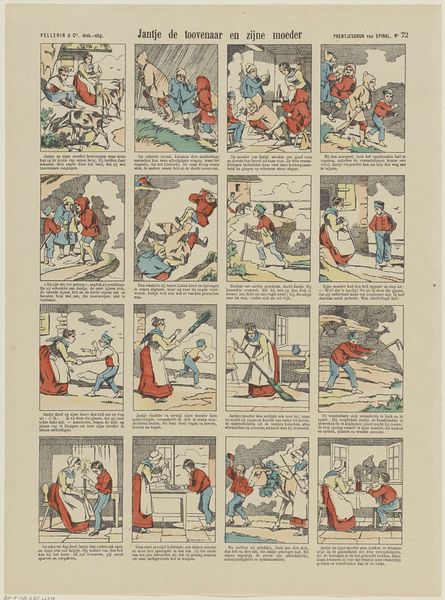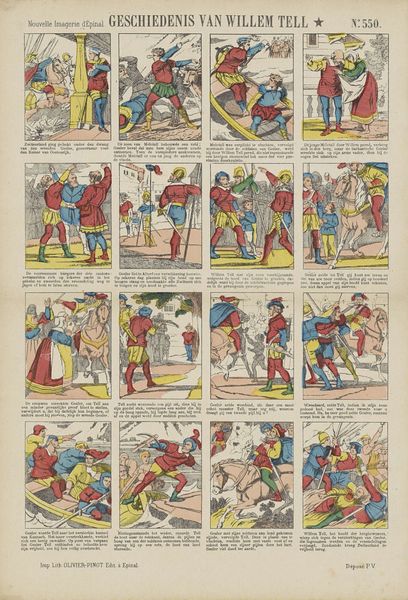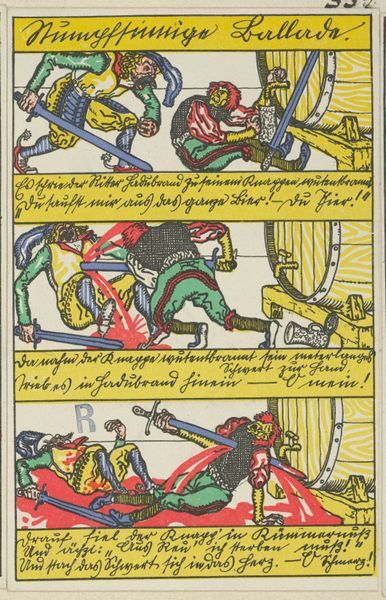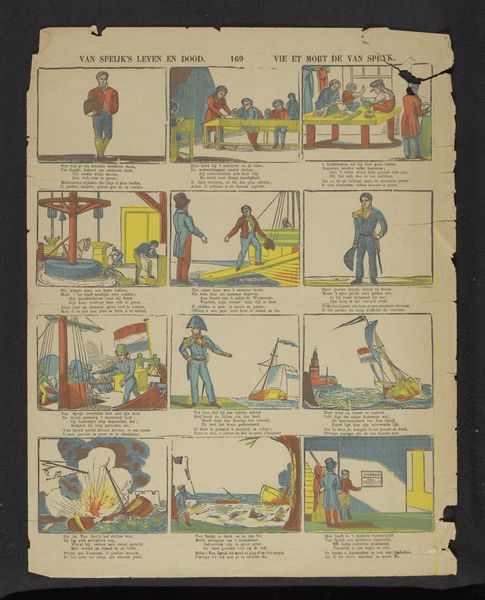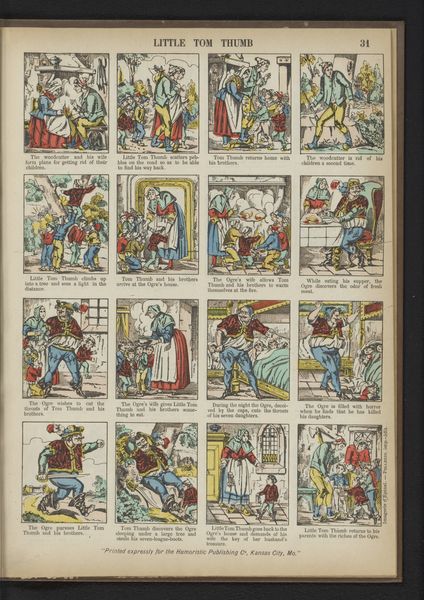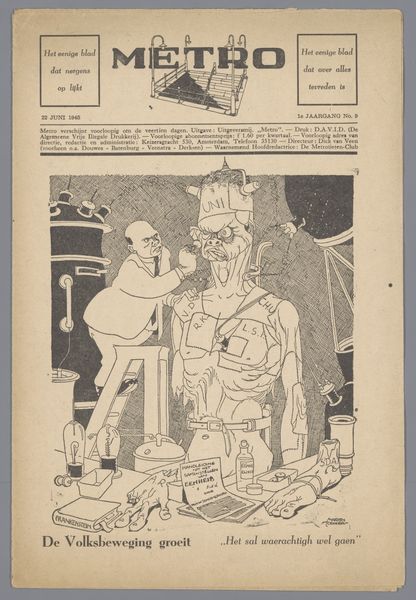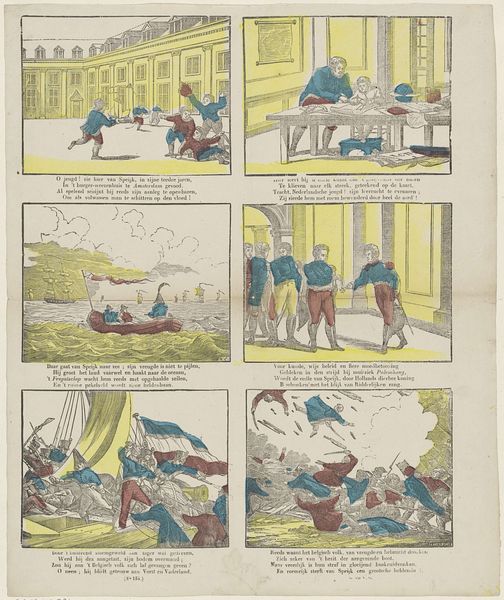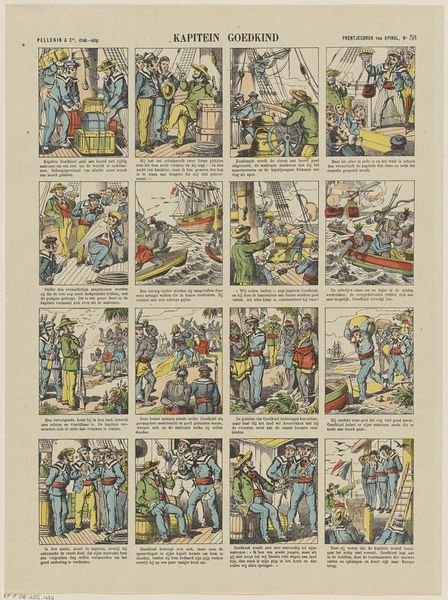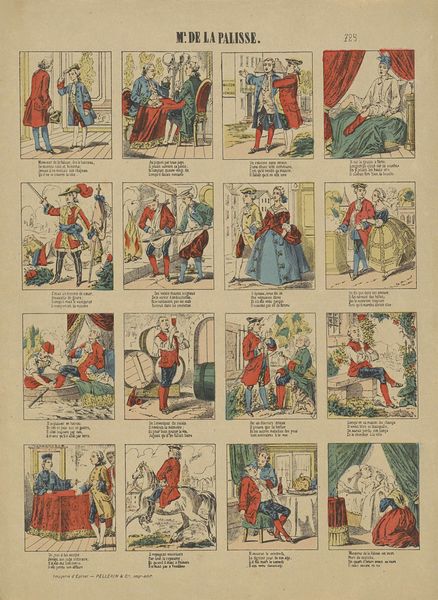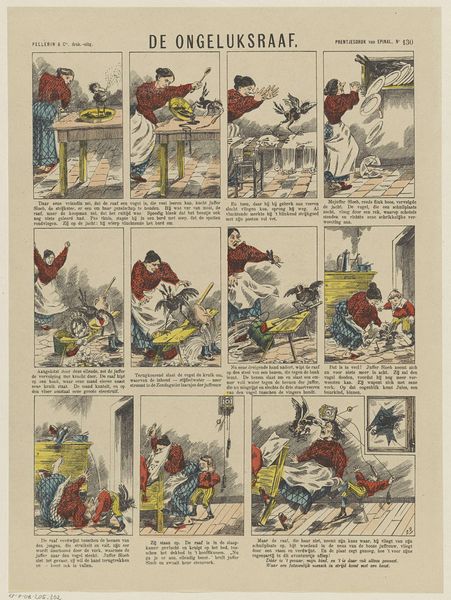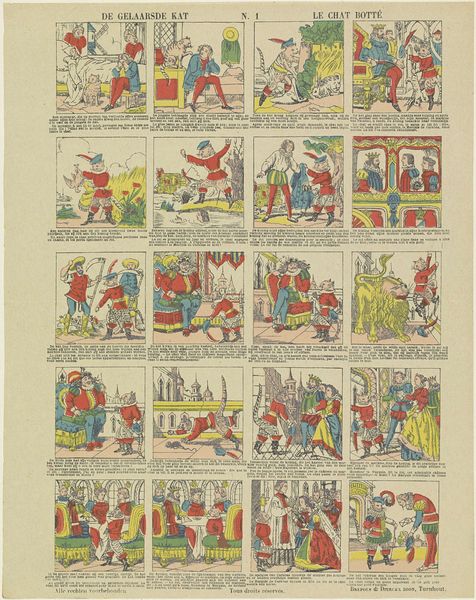
Ballad of the Involuntary and Voluntary Fall (Ballade vom unfreiwilligen und vom freiwilligen Sturz) 1911
0:00
0:00
drawing, print, paper, pen
#
drawing
#
narrative-art
# print
#
figuration
#
paper
#
expressionism
#
comic
#
pen
Dimensions: Sheet: 5 1/2 × 3 9/16 in. (14 × 9 cm)
Copyright: Public Domain
Curator: Welcome. We are looking at "Ballad of the Involuntary and Voluntary Fall" by Moriz Jung, a print and pen drawing on paper completed in 1911. It’s part of the Metropolitan Museum of Art's collection. Editor: It's quite striking! At first glance, it feels chaotic, like a series of mishaps unfolding in vivid color. There's an almost comic strip-like quality, but with a distinct undertone of anxiety. The rendering is somewhat naive. Curator: Jung was very interested in pushing boundaries between craft and high art, using common material and printing to reach a broader audience. Editor: Absolutely. The social context of pre-World War I Europe is vital here. Notice how the imagery—the falling figures, the chaotic interiors—mirrors the societal anxieties of the time. The use of a “ballad” as a form situates it within a tradition of storytelling that often conveys political or social commentary. Curator: I think this work provides visual storytelling through materials that echo working-class readership. The artist utilizes cheap papers and rudimentary processes. Editor: And the subject matter! A man falling from a plane is greeted by death figures? And there’s another scene where an embrace happens after he falls from what appears to be a closet. He is celebrated with a sign of what seems like impending doom, which speaks to a broader cultural fascination with progress and its potential dangers, but with a very funny, yet unnerving undertone. Curator: Looking closer, it does become clear that, while whimsical, the process is rooted in the expressionist moment. It utilizes readily available materials that democratize this artistic endeavor. Editor: Indeed. The bold lines, the simplified forms—all of this pushes against traditional academic styles and embodies a modern sentiment in the early 20th century of fragmentation and uncertainty. Curator: I appreciate how examining the materiality alongside its social and historical narrative informs a richer dialogue around art's place in everyday discourse. Editor: For me, seeing art as a reflection of the cultural moment underscores how it shapes—and is shaped by— prevailing attitudes towards change, progress, and relationships of love and death.
Comments
No comments
Be the first to comment and join the conversation on the ultimate creative platform.
